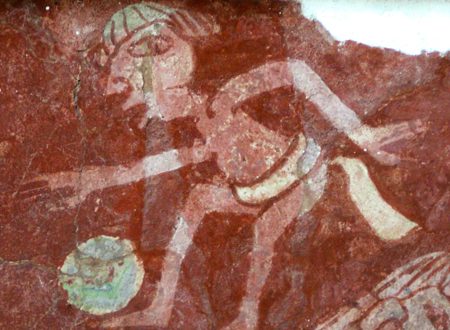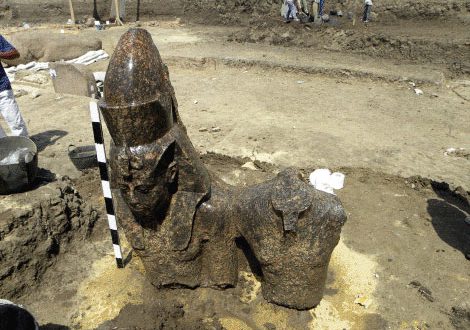
Archaeologists from the Northern Ireland Environment started excavating the 5,000-year-old Tirnony portal tomb near Maghera – an extraordinary ‘archaeological treat’ – and the public is invited to drop by, with an ‘open dig’ every Friday.
Quick update: Neolithic knife find hints at undisturbed burial
The Tirnony Portal Tomb, also known as the Tirnony Dolmen, is a single-chamber megalithic tomb, estimated to be about 5,000 to 6,000 years old. The capstone is – or rather, was – supported by three of six upright stones, two of which form the portal.
In April this year, the burial tomb’s massive capstone fell off, severely damaging one of the supporting stones (pre and post collapse photographs on megalithicireland.com).
“After standing in the Northern Ireland weather for over 5,000 years some of the tomb’s structural stones have begun to crack causing the capstone to slip,” NIEA archaeologist Paul Logue explains.
The repairs on the collapsed tomb will now allow for the rare opportunity to find out more about the ancient burial site.
“Before we start to repair the tomb we will excavate it to ensure that the archaeological material associated with it is recorded ahead of restoration work,” says Logue. “We hope to find out more about how this tomb was built, when it was built and how it was used.”
The dig will look for surviving traces of the tomb’s cairn – a mount of earth or small stones which covered the tomb – and try to determine its original shape.
The excavations should also settle if there is (or isn’t) a sort of forecourt area at the tomb, which is implied by an exceptional free standing stone near to one of its portal stones. If so, the Tirnony Dolmen is not ‘a typical portal tomb, but rather a progression from the larger ‘court tombs’.
Materials fallen in between the stones should allow for carbon dating, and thus a more accurate age for the tomb and there is some hope for “if they have not decayed, human remains from the chamber and, if possible, evidence for the types of ritual activities carried out at the tomb”.
“When the tomb was first built it would have been used for interring the bones of selected members of the local stone-age community. This could have included men and women, young and old,” explains Logue. “Finds from inside similar tombs include pottery and flint tools, possibly left as grave goods for use by the dead in the afterlife.”
The excavations continue until the end of November. You can visit the excavation and talk to the archaeologists on Fridays between 2pm and 4pm, or – if you can’t make it – follow the dig’s progress via the Archaeologist’s blog at blog.ni-environment.gov.uk/NIEA. Friday opening times may change, so it is advised to check the excavation blog before you travel.




